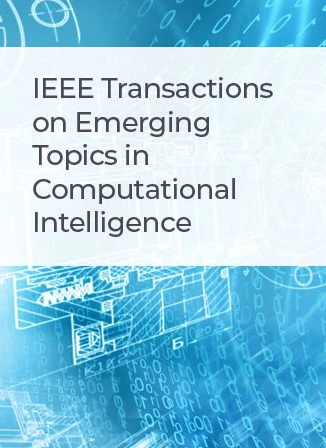Deep Learning Surrogate Models of JULES-INFERNO for Wildfire Prediction on a Global Scale
IF 5.3
3区 计算机科学
Q1 COMPUTER SCIENCE, ARTIFICIAL INTELLIGENCE
IEEE Transactions on Emerging Topics in Computational Intelligence
Pub Date : 2024-08-26
DOI:10.1109/TETCI.2024.3445450
引用次数: 0
Abstract
Global wildfire models play a crucial role in anticipating and responding to changing wildfire regimes. JULES-INFERNO is a global vegetation and fire model simulating wildfire emissions and area burnt on a global scale. However, because of the high data dimensionality and system complexity, JULES-INFERNO's computational costs make it challenging to apply to fire risk forecasting with unseen initial conditions. Typically, running JULES-INFERNO for 30 years of prediction will take several hours on High Performance Computing (HPC) clusters. To tackle this bottleneck, two data-driven models are built in this work based on Deep Learning techniques to surrogate the JULES-INFERNO model and speed up global wildfire forecasting. More precisely, these machine learning models take global temperature, vegetation density, soil moisture and previous forecasts as inputs to predict the subsequent global area burnt on an iterative basis. Average Error per Pixel (AEP) and Structural Similarity Index Measure (SSIM) are used as metrics to evaluate the performance of the proposed surrogate models. A fine tuning strategy is also proposed in this work to improve the algorithm performance for unseen scenarios. Numerical results show a strong performance of the proposed models, in terms of both computational efficiency (less than 20 seconds for 30 years of prediction on a laptop CPU) and prediction accuracy (with AEP under 0.3% and SSIM over 98% compared to the outputs of JULES-INFERNO).JULES-INFERNO的深度学习代理模型在全球范围内的野火预测
全球野火模型在预测和应对不断变化的野火状态方面发挥着至关重要的作用。JULES-INFERNO是一个全球植被和火灾模型,模拟全球范围内的野火排放和燃烧面积。然而,由于高数据维度和系统复杂性,JULES-INFERNO的计算成本使其难以应用于具有未知初始条件的火灾风险预测。通常,在高性能计算(HPC)集群上运行JULES-INFERNO进行30年的预测需要几个小时。为了解决这一瓶颈,本研究基于深度学习技术构建了两个数据驱动模型,以替代JULES-INFERNO模型,加快全球野火预测速度。更准确地说,这些机器学习模型将全球温度、植被密度、土壤湿度和之前的预测作为输入,在迭代的基础上预测随后的全球燃烧面积。采用每像素平均误差(AEP)和结构相似性指数度量(SSIM)作为指标来评估所提出的代理模型的性能。本文还提出了一种微调策略,以提高算法在未知场景下的性能。数值结果表明,所提出的模型在计算效率(在笔记本电脑CPU上进行30年预测不到20秒)和预测精度(与JULES-INFERNO的输出相比,AEP低于0.3%,SSIM超过98%)方面表现出色。
本文章由计算机程序翻译,如有差异,请以英文原文为准。
求助全文
约1分钟内获得全文
求助全文
来源期刊

IEEE Transactions on Emerging Topics in Computational Intelligence
Mathematics-Control and Optimization
CiteScore
10.30
自引率
7.50%
发文量
147
期刊介绍:
The IEEE Transactions on Emerging Topics in Computational Intelligence (TETCI) publishes original articles on emerging aspects of computational intelligence, including theory, applications, and surveys.
TETCI is an electronics only publication. TETCI publishes six issues per year.
Authors are encouraged to submit manuscripts in any emerging topic in computational intelligence, especially nature-inspired computing topics not covered by other IEEE Computational Intelligence Society journals. A few such illustrative examples are glial cell networks, computational neuroscience, Brain Computer Interface, ambient intelligence, non-fuzzy computing with words, artificial life, cultural learning, artificial endocrine networks, social reasoning, artificial hormone networks, computational intelligence for the IoT and Smart-X technologies.
 求助内容:
求助内容: 应助结果提醒方式:
应助结果提醒方式:


